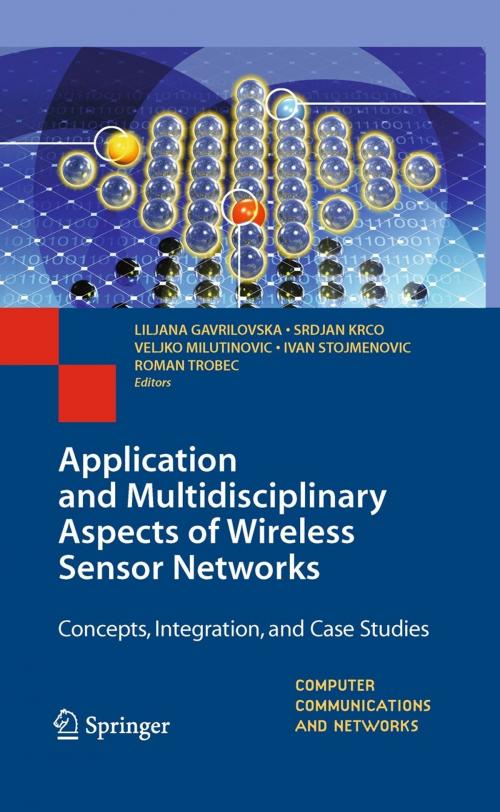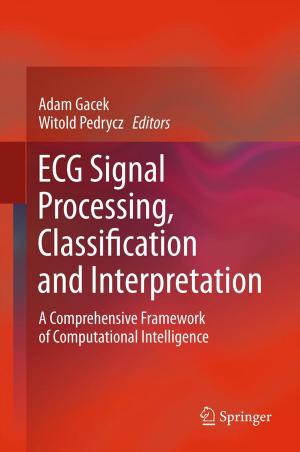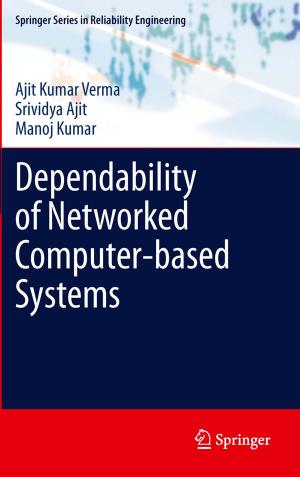Application and Multidisciplinary Aspects of Wireless Sensor Networks
Concepts, Integration, and Case Studies
Nonfiction, Computers, Networking & Communications, Hardware, General Computing| Author: | ISBN: | 9781849965101 | |
| Publisher: | Springer London | Publication: | October 5, 2010 |
| Imprint: | Springer | Language: | English |
| Author: | |
| ISBN: | 9781849965101 |
| Publisher: | Springer London |
| Publication: | October 5, 2010 |
| Imprint: | Springer |
| Language: | English |
It is a general trend in computing that computers are becoming ever smaller and ever more interconnected. Sensor networks – large networks of small, simple devices – are a logical extreme of this trend. Wireless sensor networks (WSNs) are attracting an increasing degree of research interest, with a growing number of industrial applications starting to emerge. Two of these applications, personal health monitoring and emergency/disaster recovery, are the focus of the European Commission project ProSense: Promote, Mobilize, Reinforce and Integrate Wireless Sensor Networking Research and Researchers. This hands-on introduction to WSN systems development presents a broad coverage of topics in the field, contributed by researchers involved in the ProSense project. An emphasis is placed on the practical knowledge required for the successful implementation of WSNs. Divided into four parts, the first part covers basic issues of sensors, software, and position-based routing protocols. Part two focuses on multidisciplinary issues, including sensor network integration, mobility aspects, georouting, medical applications, and vehicular sensor networks. The remaining two parts present case studies and further applications. Topics and features: presents a broad overview of WSN technology, including an introduction to sensor and sensing technologies; contains an extensive section on case studies, providing details of the development of a number of WSN applications; discusses frameworks for WSN systems integration, through which WSN technology will become fundamental to the Future Internet concept; investigates real-world applications of WSN systems in medical and vehicular sensor networks; with a Foreword by the Nobel Laurate Professor Martin Perl of Stanford University. Providing holistic coverage of WSN technology, this text/reference will enable graduate students of computer science, electrical engineering and telecommunications to master the specific domains of this emerging area. The book will also be a valuable resource for researchers and practitioners interested in entering the field.
It is a general trend in computing that computers are becoming ever smaller and ever more interconnected. Sensor networks – large networks of small, simple devices – are a logical extreme of this trend. Wireless sensor networks (WSNs) are attracting an increasing degree of research interest, with a growing number of industrial applications starting to emerge. Two of these applications, personal health monitoring and emergency/disaster recovery, are the focus of the European Commission project ProSense: Promote, Mobilize, Reinforce and Integrate Wireless Sensor Networking Research and Researchers. This hands-on introduction to WSN systems development presents a broad coverage of topics in the field, contributed by researchers involved in the ProSense project. An emphasis is placed on the practical knowledge required for the successful implementation of WSNs. Divided into four parts, the first part covers basic issues of sensors, software, and position-based routing protocols. Part two focuses on multidisciplinary issues, including sensor network integration, mobility aspects, georouting, medical applications, and vehicular sensor networks. The remaining two parts present case studies and further applications. Topics and features: presents a broad overview of WSN technology, including an introduction to sensor and sensing technologies; contains an extensive section on case studies, providing details of the development of a number of WSN applications; discusses frameworks for WSN systems integration, through which WSN technology will become fundamental to the Future Internet concept; investigates real-world applications of WSN systems in medical and vehicular sensor networks; with a Foreword by the Nobel Laurate Professor Martin Perl of Stanford University. Providing holistic coverage of WSN technology, this text/reference will enable graduate students of computer science, electrical engineering and telecommunications to master the specific domains of this emerging area. The book will also be a valuable resource for researchers and practitioners interested in entering the field.















